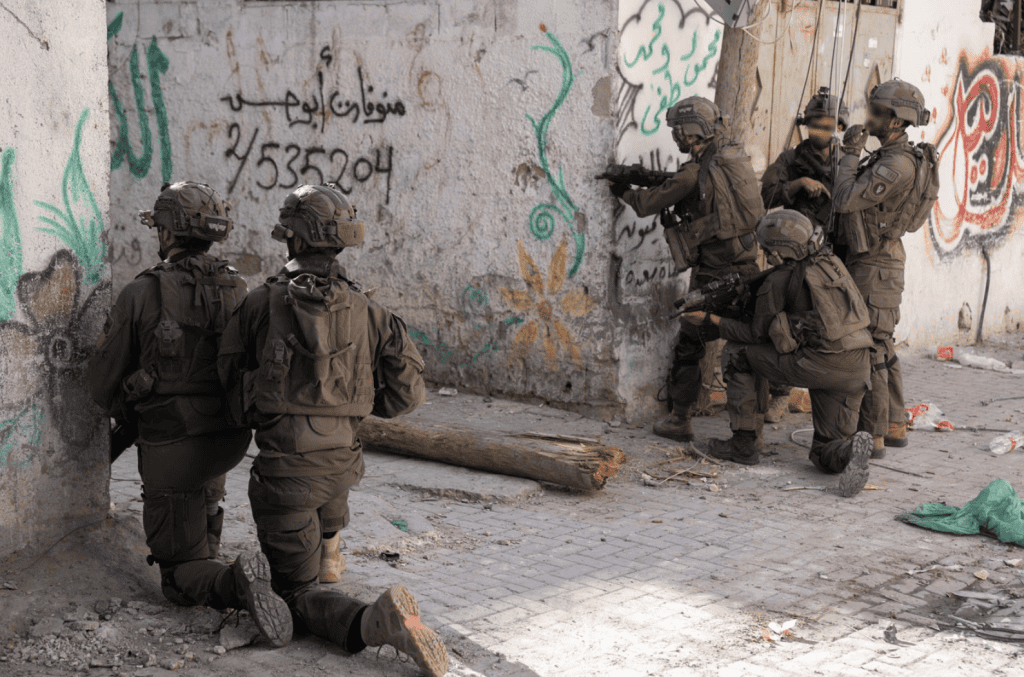
Two Israeli officers were killed in northern Gaza, the Israel Defense Forces said on February 28. This brings the total IDF losses since the war began to 582 soldiers, of whom 242 fell since the ground operation in Gaza began on October 27. The IDF continues to carry out operations in various parts of Gaza, however the intensity of the fighting was greatly reduced throughout February. This comes amid a new round of hostage deal talks with Hamas as well as escalation in northern Israel. While Israel had threatened an operation in Rafah, the last major stronghold of Hamas in Gaza, it appears the major focus is now on a new deal to free remaining hostages.
Israel’s strategy in Gaza has shifted over time. After Hamas attacked Israel on October 7, the IDF began a campaign of building up forces and carrying out airstrikes. In late October, a ground operation began that eventually included five divisions and numerous brigades of fighters in Gaza. This led to a pause in fighting and a hostage deal on November 24. Israel’s Defense Minister said that military pressure brought about the release of around 100 hostages, and that more pressure would lead to more releases. However, despite launching a campaign to take Khan Younis from Hamas in December, pressure did not result in a new deal.
Now the Khan Younis operation is almost three months old, and the war in Gaza is approaching five months of fighting. In February, the IDF began going back into neighborhoods in northern Gaza where Hamas members have reappeared. Shati, northeast of Gaza City near the beach, was re-cleared of terrorists in a two-week operation that ended around February 15. The then IDF went back into Zaytun, a neighborhood southwest of Gaza City. On February 28, the IDF said that in “the central Gaza Strip, IDF troops are continuing to operate in Zaytun. Over the past day, IDF troops killed a number of terrorists and located weapons in the area. The forces identified a terrorist cell that was eliminated by an IDF helicopter.”
The operation in Zaytun is emblematic of the challenges in Gaza. Hamas was defeated in northern Gaza in November, with around ten of its battalions shattered in heavy fighting. However, Hamas members remain and others have infiltrated back. Now the operations are easier for the IDF because a lot of the terrorist infrastructure Hamas had prepared over a decade and a half ruling the area has been degraded. But fighting still continues. The IDF said on February 27 that “over the last week, the soldiers of the 932nd Battalion Combat Team have been operating against Hamas in the Zeitoun area in the northern Gaza Strip.”
The IDF has increased its speed in identifying and eliminating terrorists responsible for rocket fire from Gaza, and rocket fire from the area has subsequently been reduced to near-zero in the last month. However on February 26, the IDF had to hunt down an “operational center from which a number” of launches were carried out. On February 28, the IDF also struck eight targets linked to rocket fire that targeted the city of Ashkelon on the evening of February 27.
The overall trend in Gaza has now led to increased use of a corridor in the middle of Gaza that helps partition the strip into two pieces, to easily manage raids into neighborhoods either in northern or central Gaza. While the IDF continues to operate in Khan Younis, questions loom about an operation in Rafah and about how Israel will settle into a new routine along the border and in areas it controls inside Gaza.







